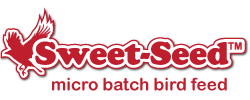Top 5 Hummingbird Garden Do's & Don'ts

It's easy to plan a garden for hummingbirds, whether you are opting for a single hummer-friendly flowerbed, a group of containers dedicated to these flying jewels or an entire yard focused on your favorite feathered friends. No matter what the size or shape of your hummingbird garden, however, there are five features you absolutely must have to make it most popular hummingbird spot on the block.
Must-haves for an active hummingbird garden.
- Food The way to a hummingbird's heart truly is through its stomach, and food is essential for any hummingbird garden. And not just any food – abundant, diverse, nutritious food is a must. Plant rich, nectar-bearing flowers for hummingbirds for a great natural food source, and add supplemental feeders with fresh nectar to accommodate more hungry guests. At the same time, minimize pesticides and insecticides that will kill gnats, flies and spiders – hummingbirds need to eat dozens of insects each day to have sufficient protein in their diets, especially during the summer when young hummers are growing fast.
- Water While hummingbirds get most of the water they need to drink from the nectar they sip, they still need suitable water for bathing and keeping cool on hot summer days. A shallow bird bath can be useful, but these tiny birds appreciate misters even more because they can fly through the cool mist to coat their feathers with ease. Position a mister or dripper to gradually splash broad deciduous leaves and you may even see hummingbirds rub or brush against the leaves to take a bath.
- Shelter Safe, secure shelter is critical to keep hummingbirds protected, and they're more likely to linger in a yard that offers them a place to roost and nest without worry. Thicket-like areas of dense shrubbery are great options, especially if thorny bushes are used to deter potential predators. Create tiers of landscaping to protect hummingbirds, and minimize pruning that would expose good hiding or nesting spots.
- Perches Hummingbirds can be very territorial, and they appreciate suitable perches where they can keep a watchful eye on their nesting sites or preferred feeding areas. A local hummingbird will return to a favorite perch again and again, giving you plenty of opportunities to watch the bird or even practice your hummingbird photography with ease. Thin branches, clotheslines, wires and even supplemental "swings" are good choices to give these tiny birds a place to perch.
- Red It is no secret that the color red will help attract hummers, and if you have some clever red accents in your hummingbird garden, you'll have feathered visitors even faster. Choose red nectar-bearing flowers, but don't stop there. A red garden bench, gazing ball or backyard sculpture can be a great accent hummingbirds will notice. Many hummingbird feeders have red parts or decorations, or you can paint a trellis or arbor a bright, summery red. If you are using containers for your hummingbird garden, consider red pots for a bright focal point.
5 Things You Never Want to Have in a Hummingbird Garden
Even while you are planning the best things to put in your hummingbird garden, take steps to minimize these top five threats to hummingbirds…
- Cats Whether outdoor pets, wandering neighborhood cats or feral felines, cats will hunt hummingbirds. Take steps to discourage cats to keep the birds safe.
- Pesticides Not only will excessive pesticides kill an important food source for hummers, but these tiny birds can easily be poisoned or contaminated by unsafe chemical use.
- Red Dye Red dye is not necessary in hummingbird nectar, and a lot of dye could cause health problems for hungry hummers. Choose red feeders instead, and opt for safer clear nectar.
- Leaking Feeders A leaky feeder spills its sweet treat before birds can sip, and sticky messes and smells will attract other, less welcome wildlife. Keep feeders clean and drip-free at all times.
- Too Many Bees or Wasps A swarm of stinging insects can be dangerous to hummingbirds. Take steps to keep insects off nectar feeders, without completely banning these important insects from your yard.
With good planning for what you do and don't want, you can easily create a hummingbird garden that becomes a welcome sanctuary for these amazing birds.
Image by toodlingstudio from Pixabay
